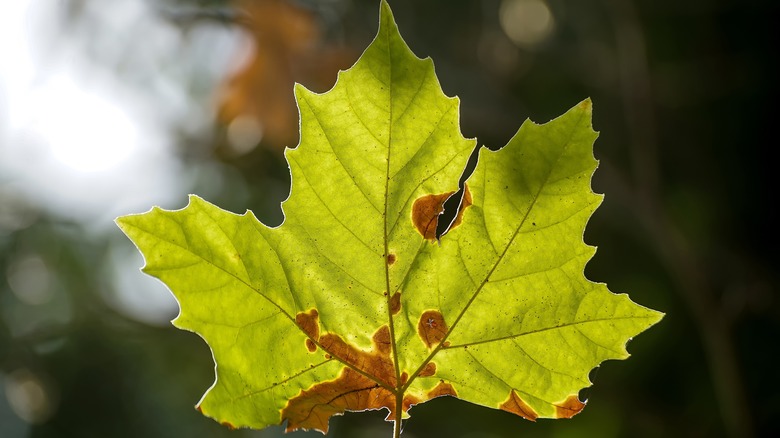Taking the step to grow a tree in your yard is a big deal. If you live in USDA hardiness zones 5 through 7, one of the best decisions you could make for your garden is adding a sycamore tree (Acer pseudoplatanus), as the large size will provide lots of shade. Further, sycamores need little to no pruning, especially in their younger days. However, they should be pruned if suffering from a disease or physical damage in some areas. Some also cut down their tree’s branches for aesthetics. The best time of year to prune your trees is during winter to early spring, or when they aren’t actively growing.
While sycamore trees are quite hardy, they aren’t immune to disease. Several fungal diseases can weaken the structural integrity of the tree by causing decay. This results in a situation where you’d have to prune it or else risk the disease spreading to the entire tree, debilitating it. You may ask yourself why you have to wait until winter to prune your sycamore tree. Being deciduous, they shed their leaves every winter which makes it easier to see the branches you’re trimming. That makes the job a lot easier. The tree is also dormant, meaning it isn’t producing any more buds or flowers, so cutting during this time won’t interfere with the blooming season. Additionally, the fungi that may be affecting your tree are also mostly dormant during the colder months, meaning that they won’t spread further through trimming.
Sycamore’s diseases and when to prune

Sycamores can be plagued with several fungal diseases that usually necessitate pruning. Sycamore anthracnose is the most dire of sycamore diseases. Repeated cases will inevitably debilitate the tree, causing the leaves to turn brown and fall before their time. The fungus also kills twigs and can overwinter. If your sycamore tree has anthracnose, prune the dead twigs and burn them along with the fallen leaves because the fungus can survive in them and resuscitate in the spring.
Canker stain occurs when you wound your tree by exposing the wood either during pruning or otherwise. The fungus can settle and cause reddish-brown to deep black canker stains which penetrate deep into healthy wood. For canker stains, the trees are best pruned from December to January because the fungal growth and activity are slowed down by the cool, dry weather. Afterward, submerge all of the pruning tools used in a bleach and water solution of a ratio of 1:9 to kill all the spores of the fungus and prevent them from becoming active.
Bacterial leaf scorch browns older leaves first before moving onto the younger ones and then eventually killing whole branches. The infected branches should be pruned out as early as possible or else risk losing the whole tree. This can happen in a matter of years so early detection is key.
Watch out for odd branches and pests
Another reason you may want to prune your sycamore tree is because of aesthetics — these are some of the largest and fastest-growing trees around. American sycamores trump many other native hardwood species when it comes to size and can grow up to 100 feet tall. If you have a sycamore tree, then it makes sense why you’d be invested in pruning it, as its foliage can reach an impressive span similar to its height. Usually, as long as there aren’t any structures nearby, there’s no need to. However, the branches can grow in odd formations or be disruptive to their surroundings, which would require them to be tamed.
Sycamores attract a range of pests, like the lace bug which lives on the undersides of leaves and pierces and sucks sap from them, and tussock moths whose larvae chew up the leaves. Blasting the leaves with water is enough to control small infestations of lace bugs. For the moths, however, they should be pruned from the tree in winter.
While you can’t stop diseases from occurring in your tree, you can take some steps to prevent them. To successfully grow a sycamore, an immunity boost is always welcome. Add fertilizer during growing months to ensure it has all the nutrients it needs to fight disease. Watering regularly is also important. Your sycamore has an impressive lifespan of 250 years. By knowing when it needs to be pruned, you can enjoy it for years to come.
